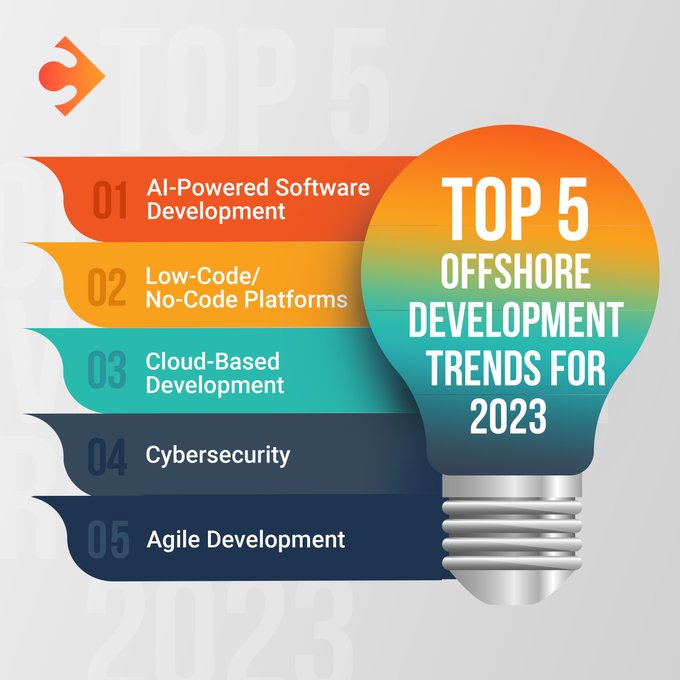Introduction: In the dynamic world of software development, offshore outsourcing has become a game-changer for businesses seeking cost-effective solutions and access to top-tier talent. As we enter 2023, several trends are reshaping the offshore development landscape, empowering organizations to leverage cutting-edge technologies and stay ahead of the competition. In this article, we explore the top five offshore development trends that are set to redefine the industry this year.
- Rise of Artificial Intelligence and Machine Learning: AI and ML have emerged as disruptive forces in offshore development. Businesses are leveraging these technologies to automate processes, gain actionable insights, and enhance decision-making. Offshore teams equipped with AI and ML expertise can deliver innovative solutions, such as intelligent chatbots, predictive analytics, and personalized user experiences, empowering organizations to streamline operations and drive growth.
- Agile Development and DevOps Adoption: Agile methodologies and DevOps practices continue to gain momentum in offshore development. Agile frameworks, such as Scrum and Kanban, enable efficient collaboration, iterative development, and faster time-to-market. DevOps, with its focus on automation, continuous integration, and seamless collaboration between development and operations teams, ensures smooth software delivery and maintenance. Offshore development teams embracing these approaches offer enhanced flexibility, transparency, and faster response times.
- Cloud Computing and Serverless Architecture: Cloud computing has revolutionized the offshore development landscape by providing scalable, secure, and cost-efficient infrastructure. Offshore teams are increasingly leveraging cloud platforms like AWS, Azure, and Google Cloud to build and deploy applications. Moreover, serverless architecture has gained traction, enabling developers to focus on code rather than managing servers. With cloud and serverless technologies, offshore development becomes more agile, scalable, and cost-effective.
- Internet of Things (IoT) Solutions: The IoT has transformed industries across the globe, and offshore development is no exception. Businesses are harnessing the power of offshore IoT development to create innovative solutions, such as connected devices, smart homes, and industrial automation. Offshore teams with expertise in IoT technologies like sensors, connectivity, and data analytics can help organizations unlock new revenue streams, improve operational efficiency, and deliver personalized experiences to their customers.
- Emphasis on Cybersecurity and Data Privacy: As digital threats continue to evolve, cybersecurity and data privacy have become critical concerns for businesses. Offshore development teams are prioritizing security by implementing robust protocols, conducting regular audits, and ensuring compliance with data protection regulations. By partnering with offshore providers that demonstrate a strong focus on cybersecurity and data privacy, organizations can mitigate risks, protect sensitive information, and maintain the trust of their customers.
Conclusion: Offshore development is witnessing a transformative shift as organizations embrace these top five trends. By leveraging AI and ML, adopting agile and DevOps practices, harnessing cloud and IoT technologies, and prioritizing cybersecurity, businesses can unlock a world of opportunities for innovation, growth, and cost savings. Staying updated with these offshore development trends will enable organizations to make informed decisions and gain a competitive edge in the dynamic global marketplace.



